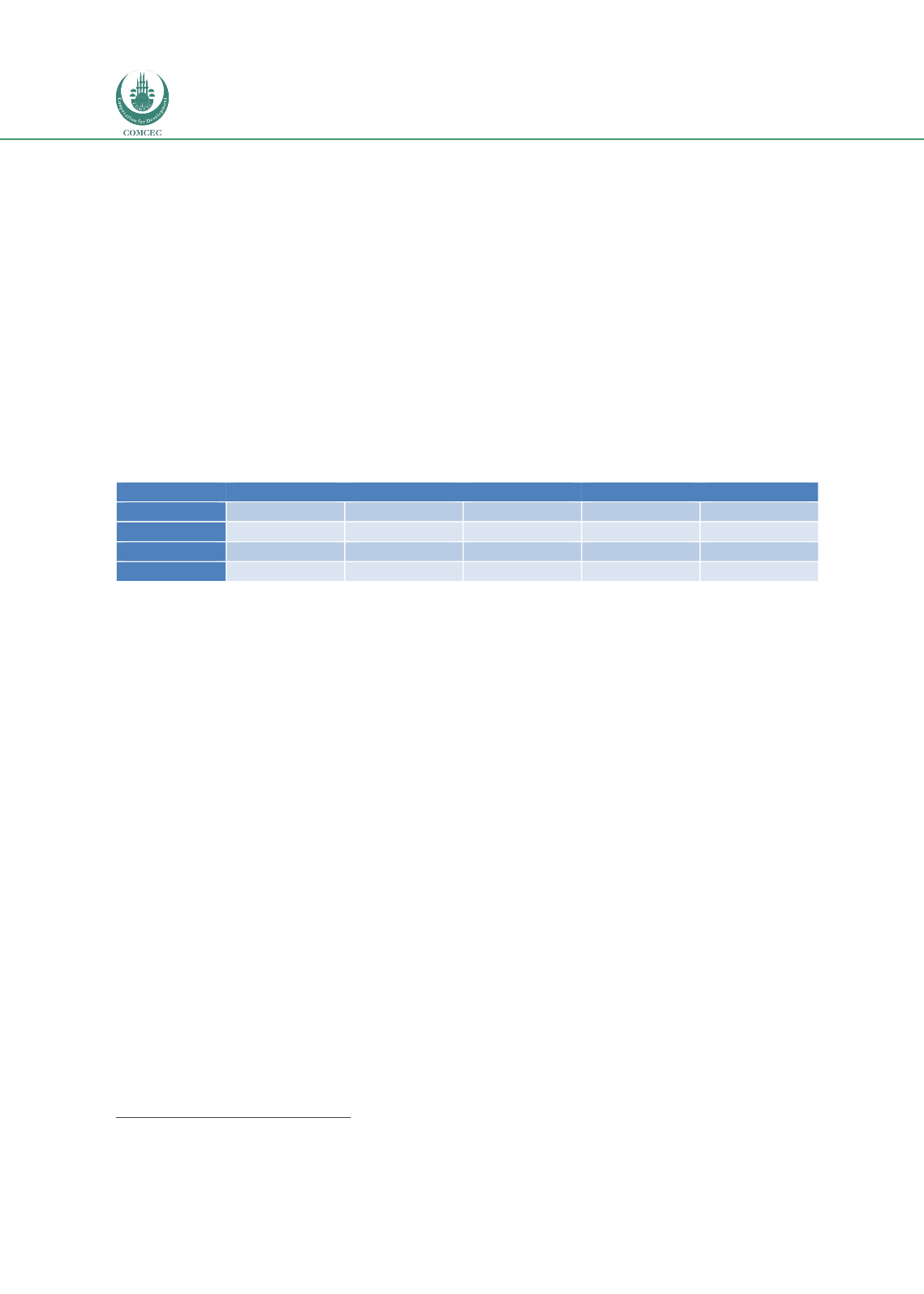

Reducing Postharvest Losses
In the OIC Member Countries
110
engaged in importing live animals for fattening and sale domestically of for export within the
members of the Gulf Cooperation Council (GCC) Free Trade Area
19
.
A secondary supply source are large scale live cattle, sheep and goat shipments from Australia,
New Zealand and Southern Africa. The third main live animal supplier is Iran who supply
Oman with sheep and goats across the Straits of Hormuz. Frozen meat enters Oman from all
the major meat producing regions including: Brazil, India, Pakistan, Australia and New
Zealand.
Farms are typically small and farming fragmented. Absentee farm management is common
with a heavy reliance on expatriate farm workers in the livestock sector. The types of livestock
farming system predominate: nomadic herding of camels and goats, transhumanant grazing of
cattle, camels and goats, and, sedentary intensive and semi-intensive production of livestock,
often combined with milk production (Table 50).
Table 50: Oman live animal stock 2010-14
Head
2010
2011
2012
2013
2014
Camels
129,560
132,200
134,800
242,833
250,000
Sheep
388,590
396,400
404,000
548,231
410,000
Goats
1,719,120
1,753,500
1,788,600
2,085,206
2,100,000
Cattle
332,780
339,500
346,000
359,500
365,000
Source: FAOSTAT and Min. of Agriculture, Oman
In 2012, Oman produced 31,723mt of red meat domestically and imported 30,600mt of red
meat equivalent on the hoof plus 20,617mt of red meat chilled or frozen. There were no red
meat exports, so the total red meat imports were 82,940mt.
Off-take from the domestic Omani animal herd is hard to assess and figures not readily
available. In smallholder pastoral and transhumance farming systems off-take is often note
considered and there is much debate about how this is calculated and what to include (Enkono
S et al 2014, p202). For example, ceremonial and cultural exchange of animals is often missed
in total calculations.
Nb: livestock keeping and all aspects of livestock marketing are a male preserve where women
are largely excluded.
4.5.2.
Assessment of Postharvest Losses and Economic Burden
Postharvest practices in Oman
The red meat value chain in Oman is divided between live (imported and domestic production)
and the import of chilled and frozen carcasses and cuts. This second element represents about
30% of consumption. Frozen and chilled meat is imported from a range of sources at
international standards and losses are reported to be unexceptional.
Losses in the domestic animal production and consumption are unknown. Interviewees for
this case study reported that anything between 85-90% of all animals produced domestically
19
The GCC was founded in 1981 and its membership includes: Gahrain, Kuwait, Oman, Qatar, Saudi Arabia and the United
Arab Emirates.
















